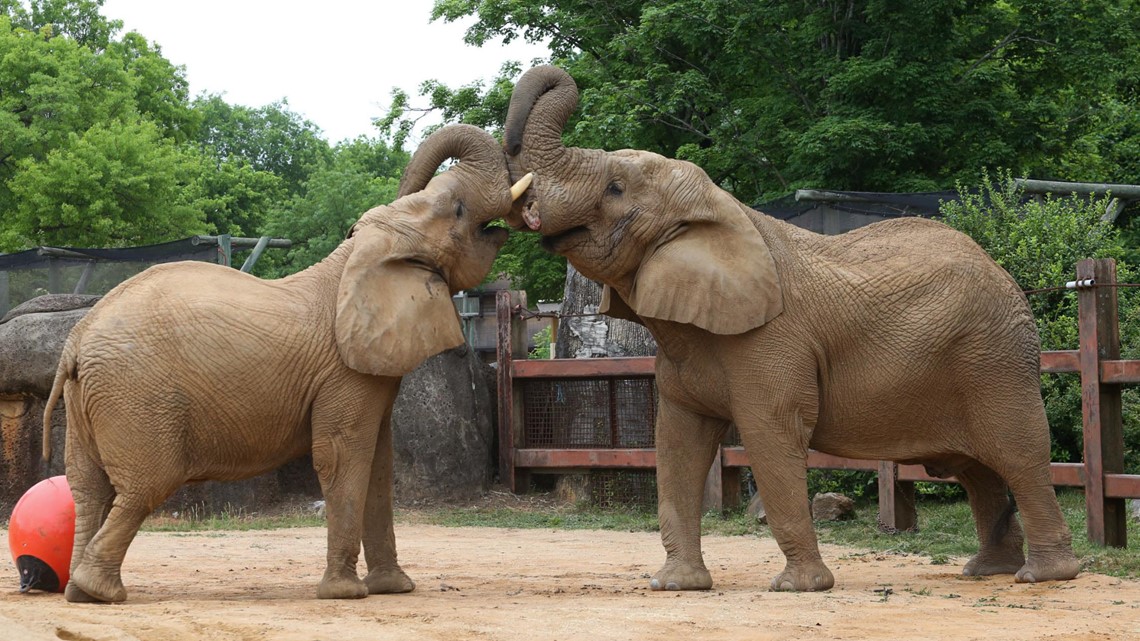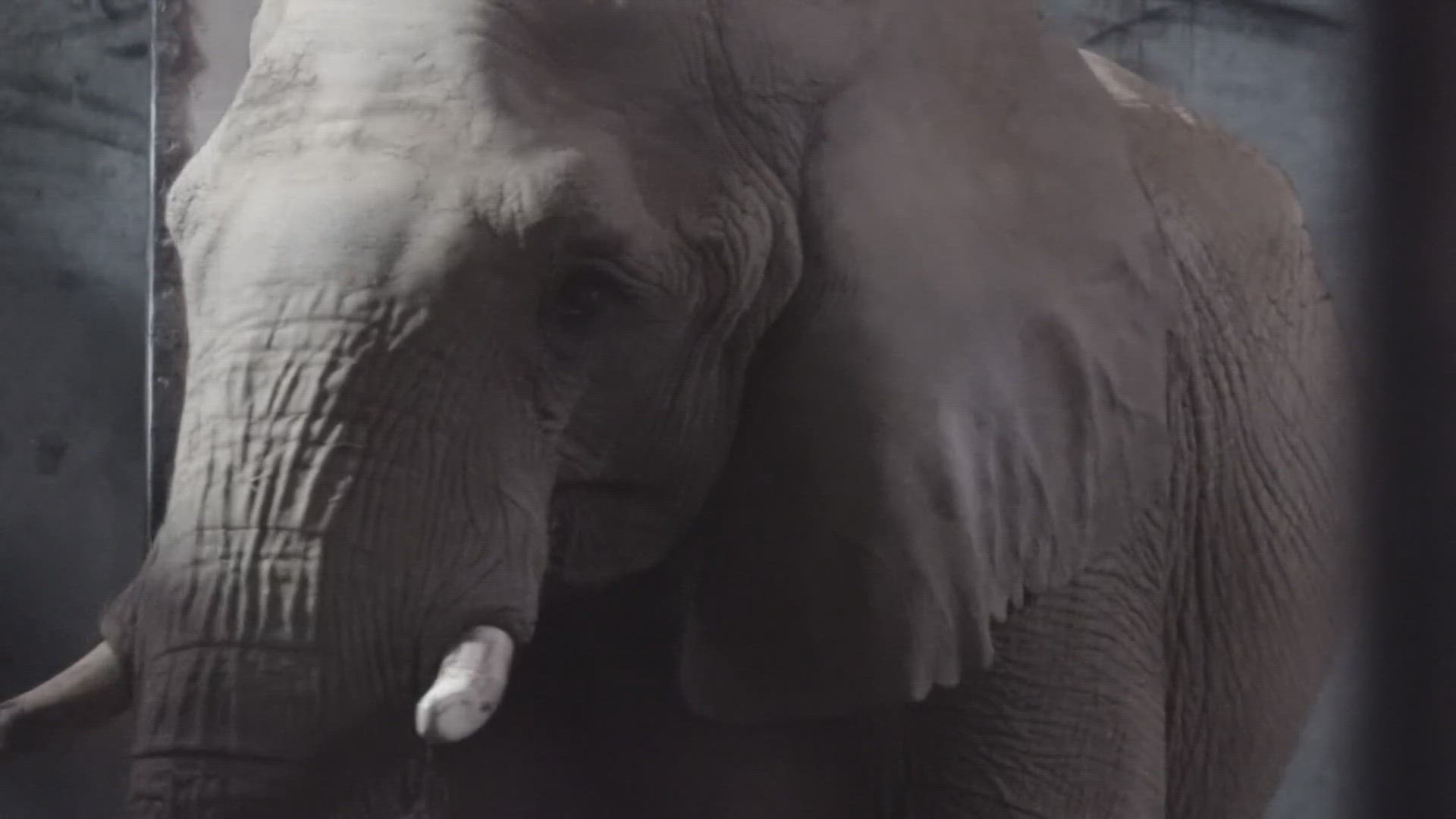KNOXVILLE, Tenn. — The last of Zoo Knoxville's three elephants is preparing to head to Hohenwald to live out the rest of his days in The Elephant Sanctuary.
Zoo Knoxville is working to prepare a crate for Tonka, which would take him to The Elephant Sanctuary. The Middle Tennessee sanctuary offers aging elephants a place to safely live with their herd. Edie, another Zoo Knoxville elephant, went to the sanctuary before Tonka.
Edie was joined by Jana, a 43-year-old elephant, who went to the sanctuary in May. However, zookeepers said she was euthanized months later in October due to her declining health.
Zoo Knoxville announced plans to move the elephants in 2022 as part of their end-of-life care plan. Hohenwald is around 250 miles away from Knoxville, and there are several steps zookeepers need to take before Tonka can be transported. First, he needs to acclimate to the travel crate he'll ride in.
Because Tonka is such a large animal, the zoo needs to build a custom crate for him to travel in. Drew Petty, the owner of a welding company in Knoxville, is helping build the crate.


"I think this is a pretty rare thing. It's a 24,000 lbs. crate for Tonka, over at the zoo. He's 16,000 lbs., so him inside is going to be somewhere around 40,000 lbs.," he said. "The whole thing will be picked up, set on a lowboy, and trailered down I-40, five or six hours."
The Elephant Sanctuary is one of two sanctuaries for elephants in North America accredited by the Global Federation of Animal Sanctuaries. It is also the only sanctuary for elephants in North America certified by the Association of Zoos and Aquariums.
It specifically does not support using elephants for entertainment, and habitats are not open to visitors. However, the sanctuary offers live streaming, giving people a chance to see elephants from the comfort of their homes.
"Tonka is the last piece of the puzzle, as far as sending our elephants to the Elephant Sanctuary in Hohenwald, Tennessee. Tonka is the largest bull elephant in the United States — 15,000 lbs. and right at 10 feet, 8 inches at his shoulder. Normally when we're moving animals, we will borrow crates from organizations, or something like that. There's none of those crates to borrow," said Phil Colclough, the zoo's Director of Animal Care, Conservation and Education.

